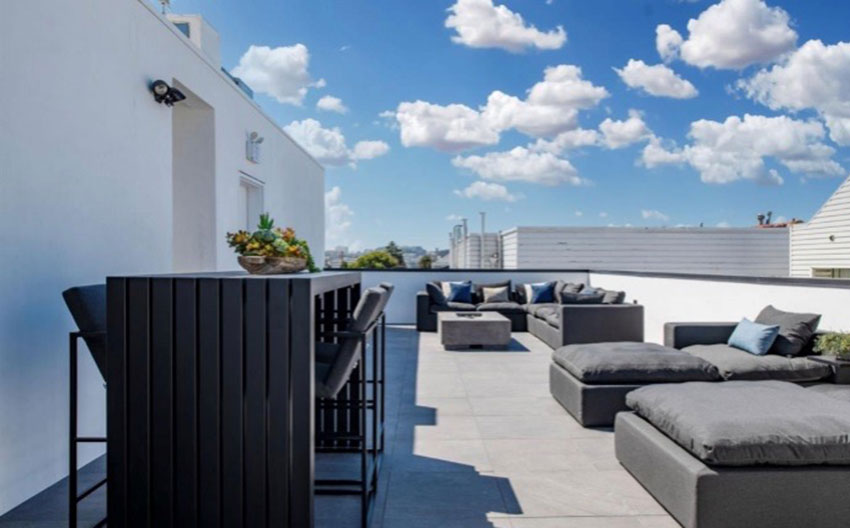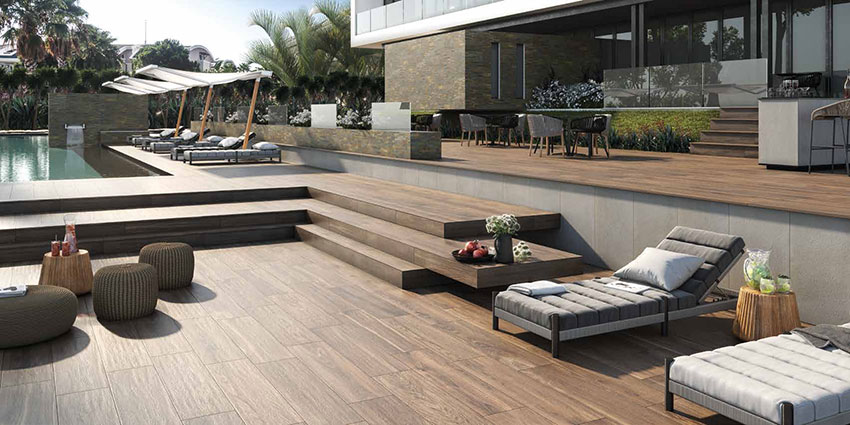Exploring Innovations in Exterior Ceramic Tile Design
 1.25 AIA LU/HSW; 1 IDCEC CEU/HSW; 0.1 ICC CEU; 0.1 IACET CEU*; 1 AIBD P-CE; AAA 1 Structured Learning Hour; This course can be self-reported to the AANB, as per their CE Guidelines; AAPEI 1 Structured Learning Hour; This course can be self-reported to the AIBC, as per their CE Guidelines.; MAA 1 Structured Learning Hour; This course can be self-reported to the NLAA.; This course can be self-reported to the NSAA; NWTAA 1 Structured Learning Hour; OAA 1 Learning Hour; SAA 1 Hour of Core Learning
1.25 AIA LU/HSW; 1 IDCEC CEU/HSW; 0.1 ICC CEU; 0.1 IACET CEU*; 1 AIBD P-CE; AAA 1 Structured Learning Hour; This course can be self-reported to the AANB, as per their CE Guidelines; AAPEI 1 Structured Learning Hour; This course can be self-reported to the AIBC, as per their CE Guidelines.; MAA 1 Structured Learning Hour; This course can be self-reported to the NLAA.; This course can be self-reported to the NSAA; NWTAA 1 Structured Learning Hour; OAA 1 Learning Hour; SAA 1 Hour of Core Learning
Learning Objectives:
- Explain the characteristics that make ceramic tile eco-friendly and provide health and safety for occupants.
- Discuss some of the looks and styles architects can achieve with ceramic tiles in outdoor applications.
- Describe the latest eco-friendly and healthy outdoor applications for gauged porcelain tile pavers (2cm and thicker) and gauged porcelain tiles and tile panels/slabs (as thin as 3.5mm).
- List new codes, standards, and certifications discussed in this article associated with ceramic tile’s contribution to healthy and green building.
This course is part of the Tile Academy
Advances with Gauged Porcelain Tile Slabs/Panels
Another recent tile trend involves gauged porcelain tile slabs and panels. This type of tile is a good choice for creating large, uninterrupted surfaces. Advances in manufacturing have led to larger, thinner tiles in this category – as large as 6 feet by 12 feet and as thin as 1/8 inch. The lightweight quality paired with new technologies for stronger mortars make these panels/slabs a choice tile for exterior facades.
Previously, building code required that projects using larger panels for exterior facades would need to apply for a code variance – an expensive, complicated process. Fortunately, the 2021 International Building Code (IBC) has been updated to strike this requirement, opening the door for slab/panel possibilities. Manufacturers are now making adhered porcelain tiles as large as 36”x72” and 48”x48” that can be used without a code variance. Designers and building owners now have greater flexibility. In addition, porcelain tile panels/slabs are becoming a more viable alternative to other types of panels.
In an adhered facade application, gauged porcelain tile adds thermal mass to the building envelope. This increases the energy efficiency of heating and cooling the building’s interior. In a ventilated facade application, gauged porcelain tile is fixed to the building exterior with fasteners. The space created between the building wall and tile circulates air, which can remove heat, keep the building dry, and improve insulation properties.
A ventilated facade can achieve an energy savings of 20 to 30% as well as reduce external noise pollution. As with pedestal systems, the ventilated chamber can be used to house pipe ductwork for easy accessibility. Ceramic tiles used in facade applications can achieve energy efficiency and innovation credits in green and healthy building programs.
In terms of aesthetics, ceramic tile facade installations like these can make a big impact with options for statement architecture and branding. And, as with other ceramic tile, this type of gauged porcelain tile comes in a variety of shapes and colors to obtain a variety of cladding designs.
Realistic Visuals
In recent years, there have been significant advancements in ceramic tile technology that have made it possible to create highly realistic visuals that mimic the look and feel of natural materials such as stone, wood, and concrete.
Ceramic tile manufacturers are now using high-resolution digital printing technology to create intricate designs and patterns that are incredibly lifelike. This technology allows for the creation of tiles that look like natural stone, wood, or concrete, with realistic details such as veining, knots, and texture.
Some manufacturers are using 3D printing technology to create tiles with more depth and texture. This process involves layering materials to create a three-dimensional effect that mimics the look and feel of natural materials.
Manufacturers are also using advanced surface treatments to create tiles that have a more natural look and feel. For example, some tiles are treated with a matte finish or a textured surface to mimic the look of natural stone or concrete.
Finally, larger tile formats can be designed to mimic the look of natural stone slabs or planks of wood, for example, and can be used to create a more cohesive and unified design.
The ability to transform the look of ceramic tile, making it virtually indistinguishable from these natural materials, has been a game-changer for outdoor applications.
Overall, these advancements in ceramic tile technology have made it possible to create highly realistic visuals that are virtually indistinguishable from natural materials, while also offering the durability and ease of maintenance of ceramic tile.
Pedestal Systems Gain Popularity in the U.S.
Pedestal systems are not a new technology, but they have gained popularity in recent years as a solution for elevated outdoor flooring. The use of ceramic tile on elevated outdoor surfaces, such as balconies, roof terraces, and patios, has traditionally been challenging due to the need for a stable substrate that can withstand exposure to weather and foot traffic.
Ceramic tile pedestal systems provide a solution to this challenge by elevating the tiles off the ground using adjustable pedestals. These systems are made up of adjustable pedestals, support plates, and spacer tabs that allow for precise leveling and spacing of the tiles. The pedestals are typically made of materials such as plastic or rubber and can be adjusted to accommodate slopes or uneven surfaces.
Ceramic tile pedestal systems have been used in Europe for many years, but their use has become more widespread in North America in recent years. They offer several advantages over traditional installation methods, including improved drainage, easier access to the substrate for maintenance, and the ability to create a level surface on uneven ground.
A pedestal system should always be checked for compatibility with any surface system over which it is being installed. In the case of a rooftop, a pedestal installation must be compatible with the roofing system itself, including membrane, insulation, protection board, and roof deck. Failed tile systems and damaged roof membranes can occur when design professionals and roofing contractors don’t communicate well about the compatibility of their materials and systems.
This type of system can be an option for renovating a space where the owner does not want to dig up, dismantle, or disturb the underlying surface. In situations where drainage requires a sloped surface, and other bonded tile systems might be tricky, a pedestal system can be installed over the top of it and adjusted to create a flat surface. This ability to create a system that is somewhat independent of its surface is a primary feature of the pedestal system. If a tile breaks, it can be easily replaced without having to disturb too much of the installation.
Another benefit, aside from potential reductions in cost and labor, includes the fact that the space created between the surface and pedestal allows hiding other systems that might otherwise be messy, unsightly, or even dangerous when exposed, such as HVAC, electrical wires, and plumbing. In addition, the hidden space can house extra features such as lighting elements that add more value and design options to the tile installation. This also makes it convenient for electricians, HVAC technicians, and plumbers—or the owner—to access infrastructure or accessory lighting when needed. This space can also be utilized for numerous other systems, including those for plant irrigation and mosquito misting.

Daltile Rekindle; image courtesy of Tile Council of North America
The latest tile solutions come at a time when residential and commercial outdoor living spaces have evolved, from makeshift solutions meant as pandemic stop-gaps to a long-term shift in design.
Case Study: Drainage and Outdoor Lighting
Outdoor tiling projects can take their cue from some indoor projects, as well. In the case of an old home in Oregon, an underused basement with a history of water problems was transformed into a livable space through a tile pedestal system. According to Dirk Sullivan, the National Tile Contractors Association (NTCA) State Director for Oregon, the project required installing French drains, a sump pump, and an industrial dehumidifier to clear the moisture. Next, they ran plumbing and an electrical conduit over the original, now-dry surface, and, finally, installed pedestal pavers over the top of the infrastructure.
Sullivan says the original floor had been “tragically out of level” because of the pitched series of drains needed to manage the water. But the pedestal system allowed them to adjust the pavers as they installed it in a way that created a level floor above the unlevel drainage floor. The ability to put electrical and plumbing infrastructure above the original flooring meant they didn’t need to find another spot for it that would likely require cutting through the concrete.
The tile company also saw another opportunity for a pedestal system for this client. As it turns out, the client had a goth aesthetic, with planter boxes in her backyard that looked like coffins. The tile team suggested running lights under a pedestal system throughout the outdoor space to give the coffin planters an eerie glow. They ran a series of cable lighting in greens, reds, purples, and blues to provide just the right atmosphere and transform it into an outdoor space that achieved the client’s aesthetic.












